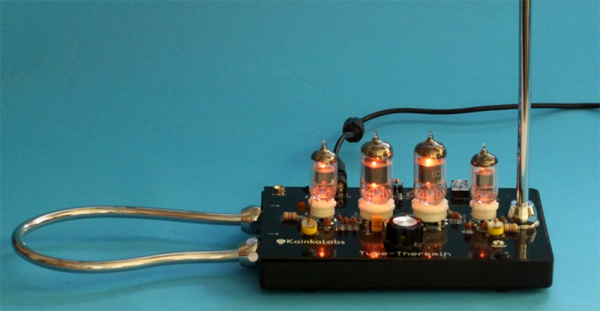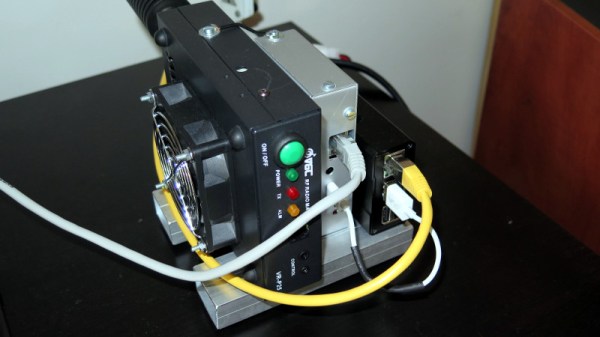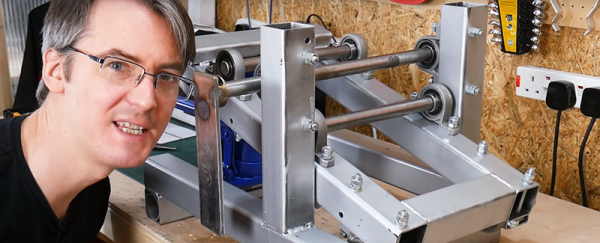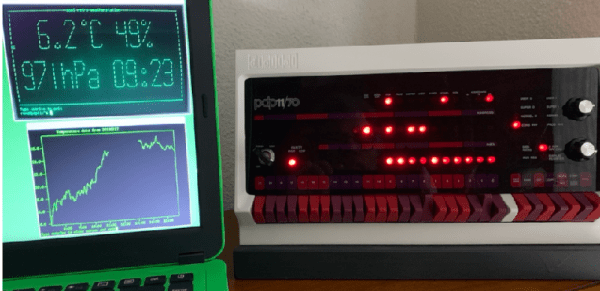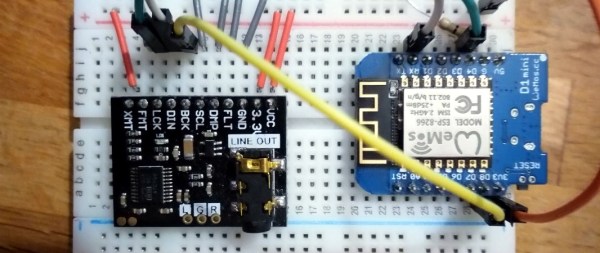Next year we’re arguably coming up on the centennial of electronic music, depending on whether you count the invention or the patent for the theremin its creation. Either way, this observation is early, so start arguing about it now. If you want to celebrate the century of the theremin, how about you do it just like grandpa Leon and build one out of tubes? That’s what this crowdfunding campaign is all about. It’s a theremin, and it’s made out of tubes.
Theremins are a dime a dozen around these parts, and yes, if you walk into a Guitar Center you can walk out the door with one. They’re pretty common. But being almost a hundred years old, the first theremin wasn’t made made with only silicon, this one had some dioxide thrown in. The first theremin was a tube device, which we all know has a warmer sound when connected to oxygen free cables in an oxygen free room. In any event, messing around with tubes is fun, so here’s a tube theremin.
The circuit for this theremin is constructed around two EF95 tubes and two ECF80 tubes with a heater voltage of 12 V, with 40 V used as the the rest of the circuitry. Unlike virtually every other crowdfunding campaign we’ve ever seen, there are pages of documentation, written down in text, with actual words, and no ominous clapping ukulele glockenspiel hipster music. It’s in German (Google Translatrix with the save) but we’ll take what we can get. It’s really great to see the development of this theremin, and now we’re wondering where we too can get a breadboard that’s just a piece of copper being used as a ground plane.

